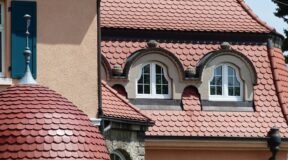The most suitable period for planting a hedge is spring or autumn. If we buy seedlings in a gardening or supermarket, we need to clarify a few things first.
First, how much we are rushing to grow a hedge, and whether we want to have an evergreen fence or a blooming or we will not mind its autumn fallout. Soil and climate conditions also play a role in the selection process. Consideration should be given to the architecture of the house, the style of the garden and its surroundings. In large gardens wild plants can be used, on the contrary, shaped hedges are suitable for smaller areas.
Evergreen fences
Among the evergreen plants that are used on hedges are snails, cypress and juniper. Tusks require good wet soil and sunshine. They need to be trimmed in time because they can grow into unmanageable heights. Cypress usually grows into a cone and should therefore be placed closer to one another. Similarly, the juniper also grows to the tip than the height.
Deciduous fences
The most commonly used hornbeam is well shaped. Unpretentious in the soil and cultivation are rockfish, barberry, hawthorn, woody woody and especially popular bird’s eye.
How to do it
Before digging, first dig out the ditch, prune the soil and fertilize. If we have the plants in the containers, gently squeeze them, cut the dry and damaged parts of the roots and then put them in the trench so that the roots do not protrude out of the ground. The distance between the individual plants is governed by the height of growth. For plants up to 60 cm should be 5 seedlings up to 1 common meter, for plants over 120 cm then 3 seedlings and if the plant grows over 4 m, then only 2 seedlings per 1 meter.
Finally, check that all the seedlings are straight, roll up the soil, and let it slide around the roots without air. Then pour it thoroughly and pour the rest of the soil.
Hints at the end
For the hedgerow to fulfill its purpose, plants must grow to a height of at least 1.5 meters. The optimal habitat for all kinds of plants used on hedges is a sunny place to a semi-shade with plenty of moisture.
This ensures that the plants are shiny and healthy. Very important is the supply of water, because both evergreen and coniferous occur in the winter to water vapor. Frequent phenomenon is especially the needle rusting, which is mistakenly attributed to rooting. In fact, it is mostly a drying out because of water scarcity. Hence, the hedge must be spilled thoroughly before the frosts arrive and also in winter if it does not freeze.





